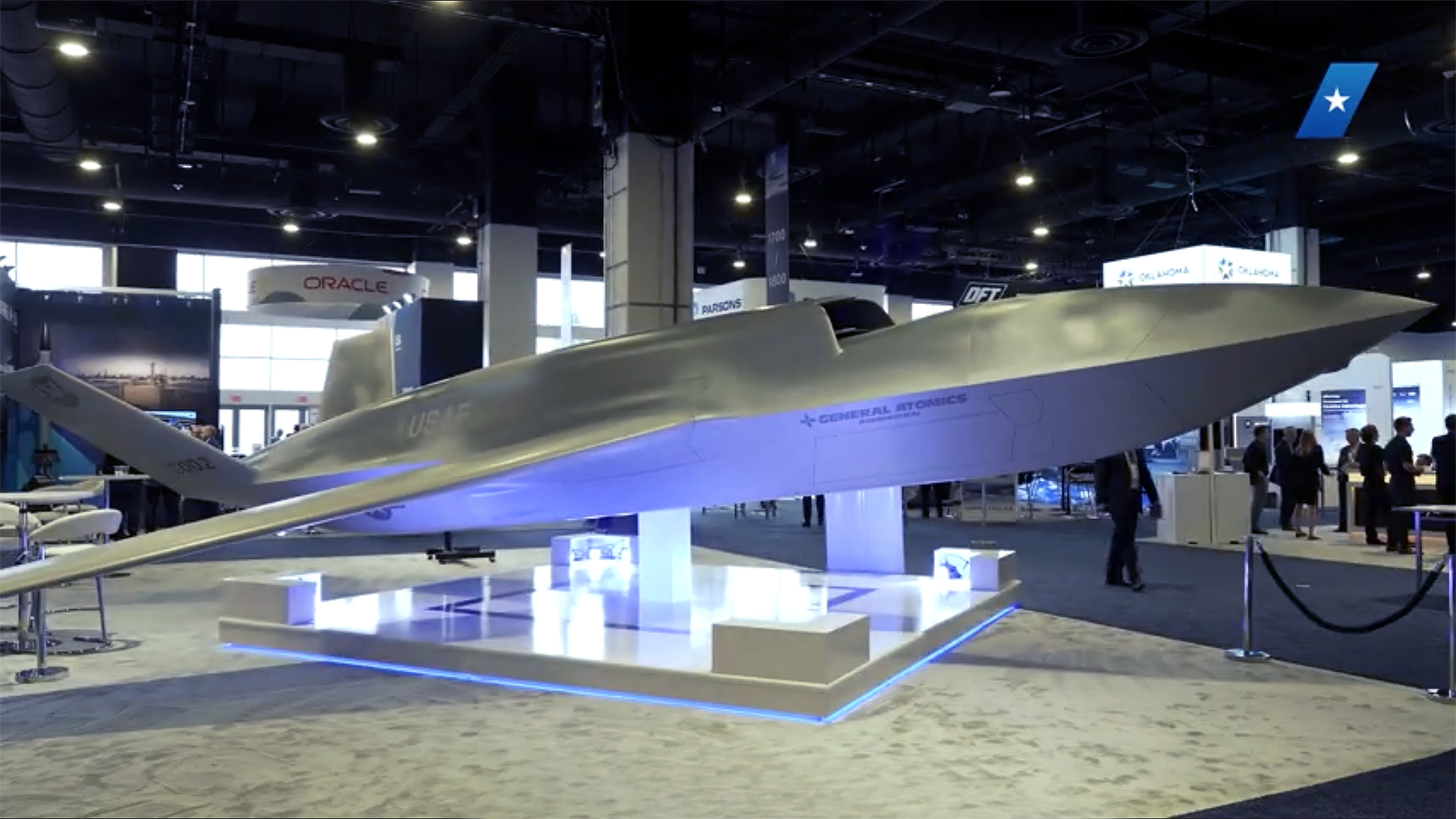General Atomics, which is one of two finalists for the first increment of the USAF’s high-stakes Collaborative Combat Aircraft (CCA) program gave The War Zone a close look at their design, as well as the closely related XQ-67A Off-Board Sensing Station (OBSS) drone. The company brought the CCA model and the actual XQ-67A OBSS to the show floor at the Air & Space Force Association’s annual Air, Space, Cyber convention just outside of Washington, D.C.
General Atomics’ CCA design is derived from the XQ-67 and reflects work the company has done and continues to explore on concepts revolving around the use of a core chassis onto which very different airframes — from those optimized for loitering near contested territory for long periods of time to much higher performance, transonic, fighter-like configurations — can be installed. OBSS has already played as something of a partial proof of concept for the common chassis idea. General Atomics is also developing a full family of drones, called Gambit, around this concept, each with the same chassis that includes landing gear and critical mission and flight control computer systems. You can read more about the company’s CCA design, the XQ-67, and Gambit here.

Michael Atwood, VP of advanced programs for General Atomics, gave us a great overview of both aircraft designs, and mentioned some interesting things, including how apparently their CCA is designed to be able to operate from rough fields. He also described exactly how General Atomics is positioning its increment one CCA contender in terms of balancing cost and capability, stating:
“General Atomics believes in balanced survivability. Which is while this plane may have some stealth features, we rely on a variety of methods, from the seafloor to space, to augment the capability. So really what you can see this as is kind of a weapons truck. It can bring all sorts of different types of weapons in different configurations, but the way it reaches its survivability is modest stealth with a lot of interoperability with other Department of Defense systems… Attritability has been a hard number for us to figure out. XQ-67 allowed us to find relative cost points where we could bring this aircraft to bear. You can think of some of these airplanes being match sticks, you can think of some of them being Zippo lighters that you refill and use all the time. We tried to make this be the Bic lighter — the thing that you’re going to depend on, that you are going to take on your camping trip that’s going to work. but after you have used its useful life, you throw away and don’t have this huge O and S (operating and support) cost.”
Check out the video below:

Contact the author: Tyler@twz.com
